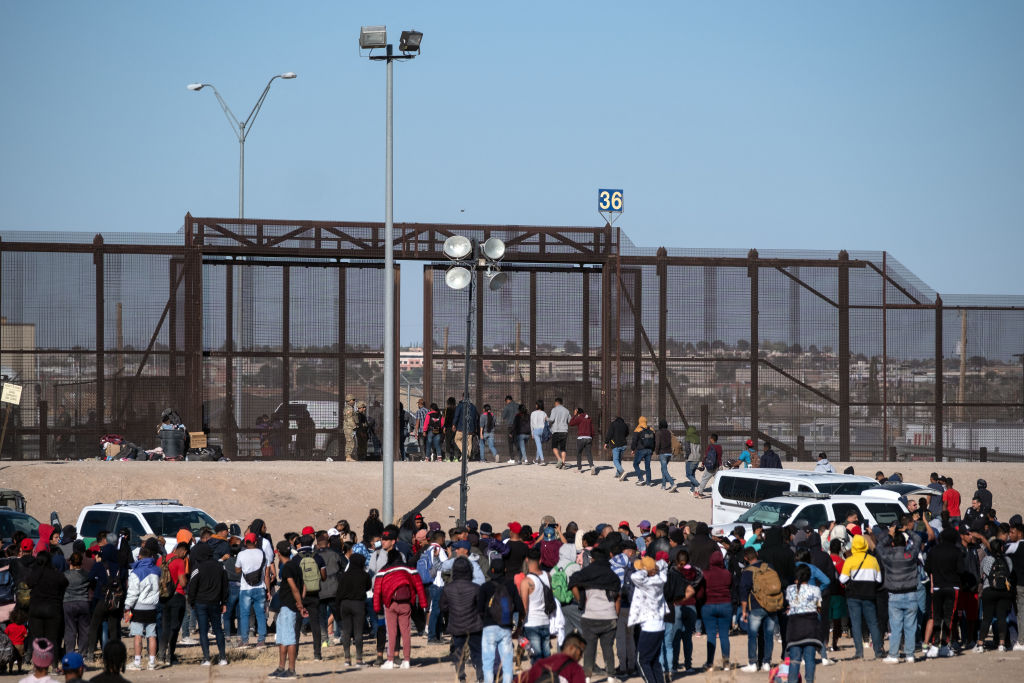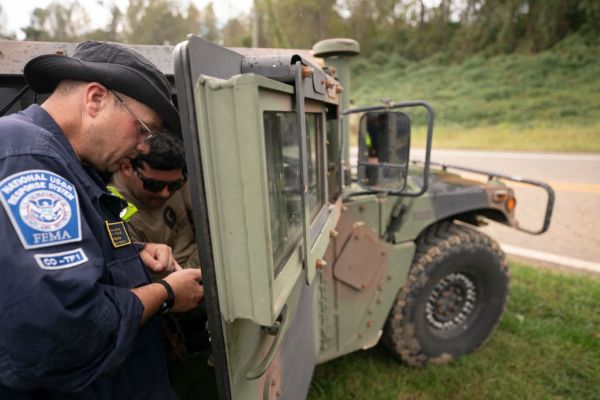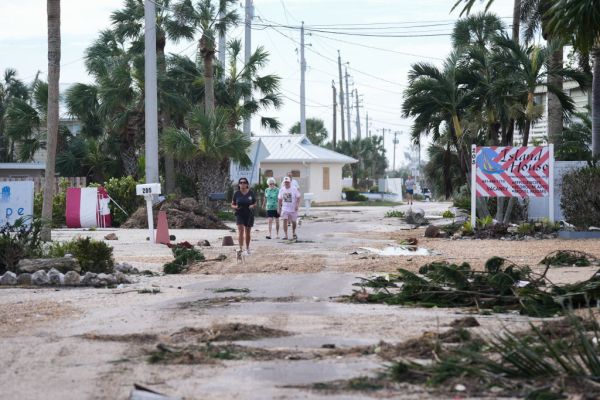Social media users have circulated posts falsely claiming that hurricane disaster victims receive only $750 in relief aid from the Federal Emergency Management Authority (FEMA) while immigrants to the U.S. receive $3,500 in prepaid debit cards, a free cell phone, free food, and free housing.
Many of the posts, which are spreading on Facebook, X, and Instagram, include an image that features both a photo of hurricane damage and a separate photo depicting migrants near a border fence.
“$750 each” reads the caption over the image of hurricane damage. Based on aerial footage taken by a local media outlet and business, the photo shows Marshall, North Carolina. In the same post is another image—taken by Agence France-Presse photographer Guillermo Arias depicting migrants gathering on the Mexican side of a border fence, and has been captioned, “$3,500 debit cards, free cell phone, free food, free housing.”

Enrique Watson, who describes himself as a professional MMA fighter on his social media accounts, posted the false graphic to Facebook and Instagram, adding the text, “Just going to leave this right here to fact check later….”
“Voting has major consequences,” the X account “LadyPowerVibes” posted. “THIS IS MENTAL ILLNESS!” another X user—with the name Ronda Rouches—tweeted on Wednesday. “If you vote for THIS… AGAIN… you are a traitor… NOT A PATRIOT.”
The claim that hurricane disaster victims receive only $750 is false. As a previous Dispatch Fact Check noted,
The $750 payment FEMA is offering to victims of Hurricane Helene is just one of several emergency aid programs FEMA administers to disaster victims.
FEMA’s Serious Needs Assistance program provides eligible applicants with a one-time payment of $750 per household, designed to cover immediate emergency expenses. The $750 payment is not intended to cover the full extent of disaster expenses. Rather, it ensures some federal aid assistance is made quickly available to disaster victims while the federal agency can process applications for additional funding under other various FEMA programs.
The claim that immigrants receive $3,500 loaded onto debit cards also has no basis in fact. New York City—which has seen more than 200,000 migrants arrive since April 2022—does have a few programs to help asylum seekers, but they are small pilot programs funded by the city government and are not broadly available to immigrants across the U.S. In January, New York City began a pilot program that issued “Immediate Response Cards”—prepaid debit cards—for migrants to spend exclusively on food and baby supplies. The cards—paid for by the New York City government and distributed by Mobility Capital Finance—are available for use only at select stores. Each recipient is required to sign an affidavit agreeing to spend the funds purely on food and baby supplies which, if violated, would result in permanent expulsion from the program. The New York Times reported that a family of four could expect about $350 per week for a month—or about $1,400. The city government issued a second round for the program in July, allotting $2.6 million in the program for distribution among 7,300 immigrants—averaging about $356.16 per recipient.
A separate New York City government program—the Asylee Movement Assistance program—offers select asylum-seeking migrants up to $4,000 in assistance for permanent housing costs, though it comes with strict eligibility. As The Dispatch Fact Check noted on Monday,
In order to receive the $4,000 benefit, the applicant must be an asylum-seeking migrant family or a pregnant woman, reside in select emergency housing shelters operated by the city government agency, and have already identified a permanent housing site.
The program’s recipients are also required to record their expenses and can only spend the $4,000 on select expenses: Moving costs, security deposits, the first and last monthly rent, and household necessities. (However, it is unclear what qualifies for household necessities.)
“This is a very small pilot only available to asylum-seeking families in select emergency shelters operated by DHS,” a New York City government spokesperson told Fox News. “This is not a citywide effort and not available to migrant families residing across the shelter system.”
The claim that immigrants to the U.S. receive free cell phones is misleading. While there are certain cases in which U.S. Immigration and Customs Enforcement (ICE) will temporarily issue a cellular device to migrants, the devices are able to access only one application—SmartLINK, used as a form of identity verification.
ICE offers several “Alternative to Detention” programs, available to certain “non-detained noncitizens” who have entered the U.S. One of those programs uses the SmartLINK app to verify the identities of those migrants using facial recognition technology. Moreover, the app can also be used to confirm a migrant’s location through global position system (GPS) technology. ICE provides further details on its website:
SmartLINK is an application that utilizes several technologies. It uses facial matching technology by comparing a selfie to a set of photos taken during program enrollment to ensure identity verification. Simultaneously, SmartLINK may obtain a single GPS point to monitor participant compliance at the time of a login or scheduled check-in. SmartLINK also provides virtual case management support, notification reminders, and direct communication with the case specialist. If an ATD participant does not have a personally owned mobile phone at the time of ATD enrollment, the participant will be issued a device capable solely of running the SmartLINK application. SmartLINK devices must be returned upon the participant’s re-assignment to a different level of supervision or completion of the ATD program.
If you have a claim you would like to see us fact check, please send us an email at factcheck@thedispatch.com. If you would like to suggest a correction to this piece or any other Dispatch article, please email corrections@thedispatch.com.









Please note that we at The Dispatch hold ourselves, our work, and our commenters to a higher standard than other places on the internet. We welcome comments that foster genuine debate or discussion—including comments critical of us or our work—but responses that include ad hominem attacks on fellow Dispatch members or are intended to stoke fear and anger may be moderated.
With your membership, you only have the ability to comment on The Morning Dispatch articles. Consider upgrading to join the conversation everywhere.